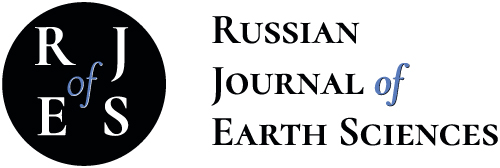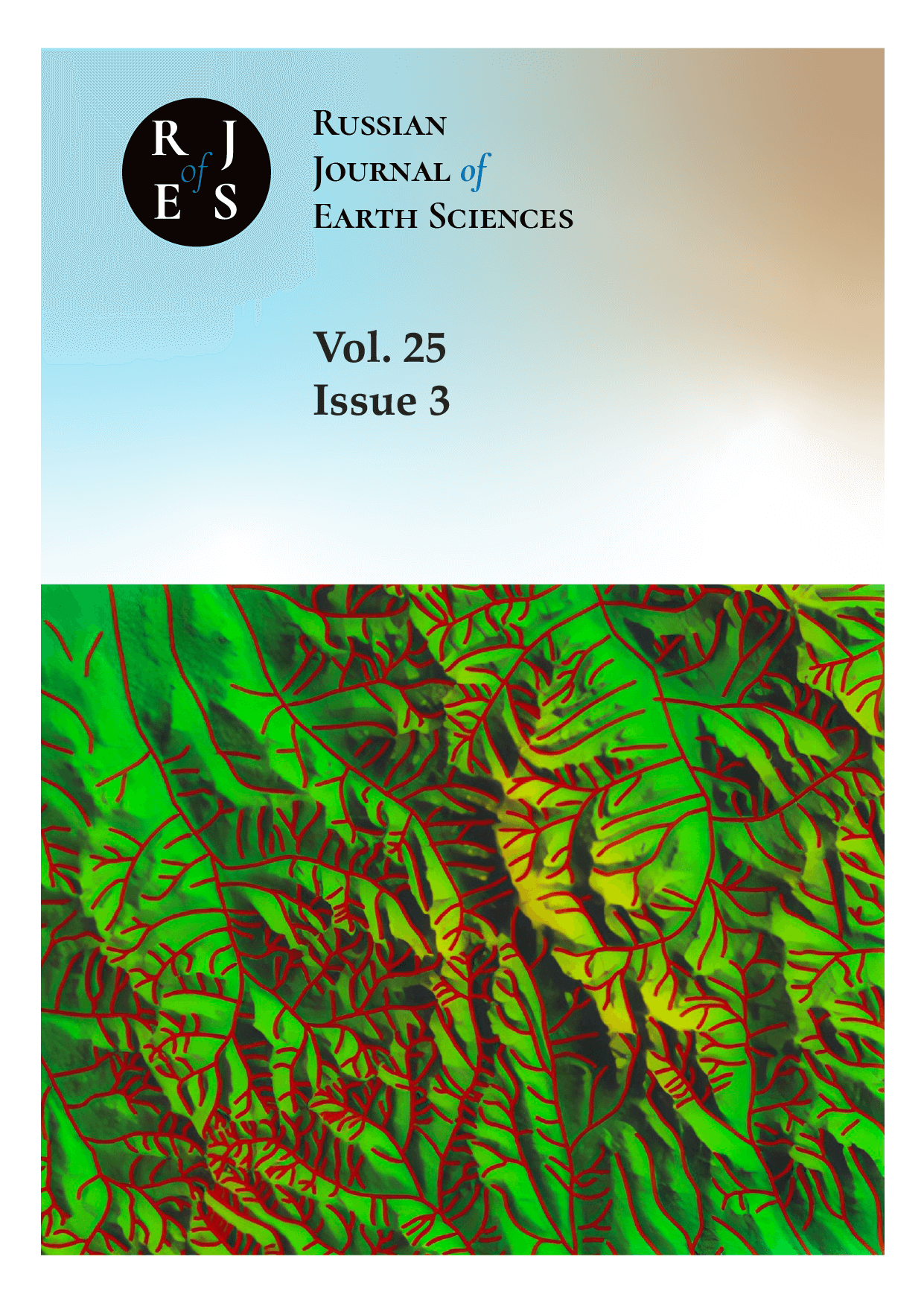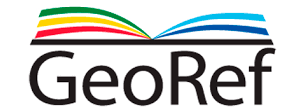Moscow, Russian Federation
Moscow, Moscow, Russian Federation
Moscow, Moscow, Russian Federation
UDC 551.4.044
UDC 528.88
UDC 553.49
UDC 55
UDC 550.34
UDC 550.383
CSCSTI 37.01
CSCSTI 37.15
CSCSTI 37.25
CSCSTI 37.31
CSCSTI 38.01
CSCSTI 36.00
CSCSTI 37.00
CSCSTI 38.00
CSCSTI 39.00
CSCSTI 52.00
Russian Classification of Professions by Education 05.00.00
Russian Library and Bibliographic Classification 26
Russian Trade and Bibliographic Classification 63
BISAC SCI SCIENCE
The article considers methodological aspects of allocation and substantiation of exploration areas for scarce types of ore minerals taking into account the concept of of mineral systems and using Earth remote sensing data with the application of geoinformation and neural network technologies using the example of the Argun metallogenic zone in South-Eastern Transbaikalia. Of the entire range of areas of fundamental and exploratory scientific research, the main attention within the framework of predictive and mineragenic studies is paid to solving the following problems: 1) allocation of lineaments (fault zones) based on processing of digital elevation models; 2) determination of hydraulically active fault structures for the period of ore formation based on tectonophysical reconstructions; 3) analysis of multispectral characteristics of pre-ore, ore-accompanying and post-ore metasomatites based on statistical processing of Landsat-8 satellite data; 4) assessment of fluid-dynamic settings of deposit formation based on data on the composition, properties and genesis of mineral-forming fluids. 5) creation of weight of evidence models based on statistical algorithms for processing data on the dynamics of ore-genetic processes. The feasibility of using such an approach for setting up predictive mineragenic studies on scarce types of strategic mineral raw materials in areas with complex climatic and landscape conditions is shown.
South-Eastern Transbaikalia, Argun metallogenic zone, digital elevation model, remote sensing of the Earth, predictive mineragenic studies, strategic metals, lineaments, tectonophysics, mineral systems, ore deposits, geoinformation system
1. Andreeva, O. V., V. A. Petrov, and V. V. Poluektov (2020), Mesozoic Acid Magmatites of Southeastern Transbaikalia: Petrogeochemistry and Relationship with Metasomatism and Ore Formation, Geology of Ore Deposits, 62(1), 69–96, https://doi.org/10.1134/s1075701520010018. EDN: https://elibrary.ru/VXMJFP
2. Betechtin, A. G., F. I. Wolfson, A. N. Zavaritsky, et al. (1953), The main problems in the study of magmatic ore deposits, 615 pp., Publishing house of the USSR Academy of Sciences, Moscow (in Russian).
3. Chi, G., D. Xu, C. Xue, et al. (2022), Hydrodynamic Links between Shallow and Deep Mineralization Systems and Implications for Deep Mineral Exploration, Acta Geologica Sinica - English Edition, 96(1), 1–25, https://doi.org/10.1111/1755-6724.14903. EDN: https://elibrary.ru/KQPPQC
4. Grishkov, G. A., I. O. Nafigin, S. A. Ustinov, et al. (2023), Developing a Technique for Automatic Lineament Identification Based on the Neural Network Approach, Izvestiya, Atmospheric and Oceanic Physics, 59(10), 1271–1280, https://doi.org/10.1134/s0001433823120101. EDN: https://elibrary.ru/PKFULO
5. Gzovsky, M. V. (1975), Fundamentals of Tectonophysics, 536 pp., Nauka (in Russian).
6. Hancock, P. L. (1985), Brittle microtectonics: principles and practice, Journal of Structural Geology, 7(3–4), 437–457, https://doi.org/10.1016/0191-8141(85)90048-3.
7. International Atomic Energy Agency (2020), Descriptive Uranium Deposit and Mineral System Models, 328 pp., IAEA, Vienna.
8. Lespinasse, M. (1999), Are fluid inclusion planes useful in structural geology?, Journal of Structural Geology, 21(8–9), 1237–1243, https://doi.org/10.1016/s0191-8141(99)00027-9. EDN: https://elibrary.ru/ADCBQR
9. Lespinasse, M., L. Desindes, P. Fratczak, and V. Petrov (2005), Microfissural mapping of natural cracks in rocks: Implications for fluid transfers quantification in the crust, Chemical Geology, 223(1–3), 170–178, https://doi.org/10.1016/j.chemgeo.2005.05.009. EDN: https://elibrary.ru/LJBNHX
10. Mashkovtsev, G. A., and V. A. Petrov (2023), Ways to improve the scientific and methodological foundations of prospecting for solid minerals, in Collection of reports of the scientific and practical conference "Actual problems of prospecting geology". November 22-24, 2022, pp. 195–208, FGBU "VIMS", Moscow (in Russian).
11. Minaev, V. A., S. A. Ustinov, V. A. Petrov, et al. (2024), Regional Remote Sensing Analysis of Fault Tectonics of the Kola Peninsula and Its Role in Ore Formation, Russian Journal of Earth Sciences, 24, ES3010, https://doi.org/10.2205/2024es000918 (in Russian).
12. Nafigin, I. O., V. T. Ishmukhametova, S. A. Ustinov, et al. (2022), Geological and Mineralogical Mapping Based on Statistical Methods of Remote Sensing Data Processing of Landsat-8: A Case Study in the Southeastern Transbaikalia, Russia, Sustainability, 14(15), 9242, https://doi.org/10.3390/su14159242. EDN: https://elibrary.ru/LUKAKC
13. Pek, A. A., V. I. Malkovsky, and V. A. Petrov (2020), Mineral System of the Streltsovka Caldera Uranium Deposits (East Transbaikalia), Geology of Ore Deposits, 62(1), 31–48, https://doi.org/10.1134/s1075701520010055. EDN: https://elibrary.ru/OACNAJ
14. Petrov, V. A. (2017), Seismogeodynamics and tectonophysics of the hydrothermal ore formation, Exploration and protection of mineral resources, (11), 37–42 (in Russian), EDN: https://elibrary.ru/YTHJTD.
15. Petrov, V. A., M. Lespinasse, V. V. Poluektov, et al. (2013a), Stress-time context of fault permeability at the Krasnokamensk Area SE Transbaikalia, Journal of Physics: Conference Series, 416, 012,018, https://doi.org/10.1088/1742-6596/416/1/012018. EDN: https://elibrary.ru/RFIWCZ
16. Petrov, V. A., S. A. Ustinov, V. V. Poluektov, and V. Y. Prokofiev (2013b), Reconstructing Ways and Conditions of Migration of Ore-Bearing Hydrothermal Solutions: Geostructural and Thermobarogeochemical Approach, Russian Foundation for Basic Research Journal, (1(77)), 27–32 (in Russian), EDN: https://elibrary.ru/ZXKFZB.
17. Petrov, V. A., O. V. Andreeva, V. V. Poluektov, and D. V. Kovalenko (2017), Tectonomagmatic cycles and geodynamic conditions of formation of the ore-bearing systems in the Southern Argun’ Region, Doklady Earth Sciences, 472(2), 159–162, https://doi.org/10.1134/s1028334x17020179. EDN: https://elibrary.ru/TVCCNS
18. Petrov, V. A., A. A. Pek, and V. I. Malkovsky (2022), Uranium Sources and Fluid Transport in Volcanic Mineralized Systems: an Example of Streltsovka Caldera, Russia with Reflection on Dornot, Mongolia, Journal of Volcanology and Seismology, 16(6), 472–497, https://doi.org/10.1134/s0742046322060045. EDN: https://elibrary.ru/GKZOWF
19. Petrov, V. A., S. A. Ustinov, V. A. Minaev, et al. (2024), Geoinformation technologies in forecasting and mineragenic researches, Prospect & protection of mineral resources, (2), 25–35, https://doi.org/10.53085/0034-026x_2024_2_25 (in Russian).
20. Prokof’ev, V. Y., and A. A. Pek (2015), Problems in estimation of the formation depth of hydrothermal deposits by data on pressure of mineralizing fluids, Geology of Ore Deposits, 57(1), 1–20, https://doi.org/10.1134/s1075701515010043. EDN: https://elibrary.ru/UFNMMH
21. Rebetsky, Y. L., L. A. Sim, and A. V. Marinin (2017), From slickensides to tectonic stresses. Methods and algorithms, 234 pp., GEOS (in Russian).
22. Riedel, W. (1929), Zur Mechanik geologischer Brucherscheinungen, Zentralblatt für Mineralogie, Geologie und Paleontologie, 30, 354–368.
23. Rybalov, B. L. (2000), Evolutionary series of late Mesozoic ore deposits of Eastern Transbaikalia, Geology of Ore Deposits, 42(4), 377–388 (in Russian).
24. Sheahan, C., M. Fayek, D. Quirt, and C. W. Jefferson (2016), A Combined Ingress-Egress Model for the Kianna Unconformity-Related Uranium Deposit, Shea Creek Project, Athabasca Basin, Canada, Economic Geology, 111(1), 225–257, https://doi.org/10.2113/econgeo.111.1.225. EDN: https://elibrary.ru/WUBFQF
25. Sibson, R. H. (2019), Arterial faults and their role in mineralizing systems, Geoscience Frontiers, 10(6), 2093–2100, https://doi.org/10.1016/j.gsf.2019.01.007.
26. Skirrow, R. G., S. Jaireth, D. L. Huston, et al. (2009), Uranium mineral systems: processes, exploration criteria and a new deposit framework, 44 pp., Geoscience Australia Record 2009/20.
27. Smirnov, V. I. (1976), Geology of useful minerals, 688 pp., Nedra (in Russian).
28. Ustinov, S. A., and V. A. Petrov (2016), Use of Detailed Digital Relief Models for the Structural and Lineament Analysis (On Example of the Urtuysky Granite Massif, SE Transbaikalia), Geoinformatika, (2), 51–60 (in Russian), EDN: https://elibrary.ru/WBKJRP.
29. Ustinov, S. A., and V. A. Petrov (2018), Theoretical Basics and Opportunities of the Special Technique of Microstructural Analysis Application, Advances in modern natural science, (10), 125–131 (in Russian), EDN: https://elibrary.ru/VKLEVC.
30. Ustinov, S. A., V. A. Petrov, V. A. Minaev, et al. (2024), Detection and Interpretation of Central Type Structures within the Territory of Southeastern Transbaikalia for Prediction of Ore-Forming Systems, Geology of Ore Deposits, 66(4), 345–375, https://doi.org/10.1134/s107570152460018x. EDN: https://elibrary.ru/SQIYHA
31. Wyborn, L. A. I., C. A. Heinrich, and A. L. Jaques (1994), Australian Proterozoic mineral systems: essential ingredients and mappable criteria, in 1994 AuslMM Annual Conference, Darwin 5-9 August 1994, pp. 109–115.
32. Zlobina, T. M., V. A. Petrov, V. Y. Prokofiev, et al. (2020), Seismogenic Nature of Fluid-Dynamic Structural Parageneses of the Uryakh Gold Ore Field (Northeastern Transbaikalia), Geology of Ore Deposits, 62(4), 261–287, https://doi.org/10.1134/s1075701520040066. EDN: https://elibrary.ru/WMHECN
33. Zoback, M. D., J. Townend, and B. Grollimund (2002), Steady-State Failure Equilibrium and Deformation of Intraplate Lithosphere, International Geology Review, 44(5), 383–401, https://doi.org/10.2747/0020-6814.44.5.383.

















